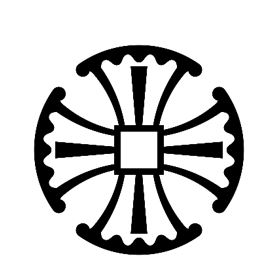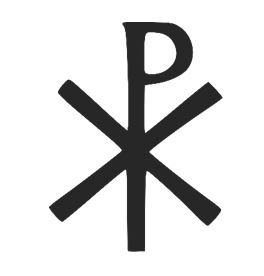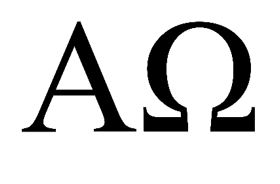We often see many symbols as we encounter Christianity, whether during worship, while reading, and even on the back of some cars! Let’s take a look at the realm of Christian symbols. These symbols, encountered in diverse settings like worship, literature, and even in our daily lives, hold deep theological meanings and are steeped in a rich historical context. They act as powerful vessels of faith, eloquently narrating stories of devotion, sacrifice, and the boundless love of God. We will delve into some of these prevalent symbols, understanding their origins and the profound significance they carry.
 The Celtic Cross: An Emblem of Eternity and Faith
The Celtic Cross: An Emblem of Eternity and Faith
The Celtic Cross, recognizable by its unique ring intersecting the cross, stands as a profound symbol in Christian heritage. Emerging in the early medieval period, around the 7th century, it symbolizes the redemptive sacrifice of Christ, while the encompassing ring represents eternal life, mirroring God’s infinite love. Adorned with intricate knotwork, it reminds us of the interwoven nature of our spiritual and earthly existence. Today, this emblem graces grave markers, church art, and religious jewelry, continually reminding us of our faith and heritage.
 The Canterbury Cross: A Legacy of Anglo-Saxon Artistry
The Canterbury Cross: A Legacy of Anglo-Saxon Artistry
The Canterbury Cross: Celebrating Anglo-Saxon Legacy Dating back to the 9th century, the Canterbury Cross, with its distinct square shape and detailed filigree work, reflects the rich tapestry of Christian symbolism in England. Each arm of the cross, pointing to the Gospels, draws us closer to the life and teachings of Jesus Christ. In modern Christian practice, especially within the Anglican tradition, the Canterbury Cross is revered, adorning various liturgical items and publications, celebrating England’s deep Christian roots.
 The Pelican: A Medieval Metaphor for Christ’s Sacrifice
The Pelican: A Medieval Metaphor for Christ’s Sacrifice
The Pelican: Illustrating Christ’s Sacrifice The medieval symbol of the pelican, nurturing her young with her own blood, powerfully depicts Christ’s self-sacrifice and His nurturing love for the Church. This vivid allegory of redemption and divine care, rooted in ancient folklore and embraced in the 12th century, finds expression in Christian art, stained glass, and altars, encouraging meditation on sacrifice and divine love.The Jerusalem Cross, emerging in the 12th century, originally represented the Kingdom of Jerusalem. Its design, a central cross surrounded by four smaller crosses, signifies Christ, the Gospels, and the spread of Christianity worldwide. Today, this emblem is prevalent in Christian heraldry and liturgy, reminding believers of their mission to evangelize and live in unity with all Christians.
 The Jerusalem Cross: Evangelism and the Unity of Faith
The Jerusalem Cross: Evangelism and the Unity of Faith
Dating back to the 12th century, the Jerusalem Cross, or the Crusader’s Cross, was originally used by the Kingdom of Jerusalem. This emblem, featuring a large central cross surrounded by four smaller crosses, symbolizes Christ and the four Gospels, as well as the spread of Christianity to the four corners of the world. Today, the Jerusalem Cross is prevalent in Christian heraldry, liturgical items, and as souvenirs for pilgrims, serving as a constant reminder for believers of their call to spread the Gospel and live in unity with all Christians.
 The Chi Rho: Constantine’s Emblem of Faith
The Chi Rho: Constantine’s Emblem of Faith
The Chi Rho, forming a monogram from the Greek word for Christ, gained prominence in the early 4th century under Emperor Constantine. Accompanied by the Alpha and Omega symbols, it declares faith in Christ’s eternal nature. This symbol, adorning liturgical vestments and church art, represents a bold declaration of Christian faith.
 The Ichthys (Fish): A Secret Symbol of Early Christianity
The Ichthys (Fish): A Secret Symbol of Early Christianity
The Ichthys, or fish symbol, originating in 1st-century Christian communities, served as a covert sign of Christian identity. Forming an acronym for “Jesus Christ, Son of God, Savior,” it enabled early Christians to safely express and recognize their faith. Today, the Ichthys remains a popular emblem, symbolizing shared faith and a sense of belonging in the Christian community.
 Alpha and Omega: Symbols of Divine Completeness
Alpha and Omega: Symbols of Divine Completeness
The Alpha and Omega, embodying the eternal nature of Christ and God’s sovereignty, were adopted as Christian symbols in the 4th century. These symbols, omnipresent in Christian art and decorations, serve as visual reminders of God’s omnipresence and unchanging faithfulness.
These symbols are a beautiful and varied patchwork of faith. Each one tells a deep story about faith, hope, and God’s love that knows no limits. They tie us, the Christians of today, to the rich, long-lasting history of our faith, even though they happen a long time ago. There is more to these traditional symbols than meets the eye. They are visual lectures that teach, inspire, and constantly remind us of the deep, unchanging truths of our faith.
